Tom Doncourt, mellotronist from pioneering American progressive rock band Cathedral, the group that created “Stained Glass Stories,” passed away March 20, 2019, about one year ago. Doncourt was also an artist, instrument builder, and a preparator at the American Museum of Natural History.
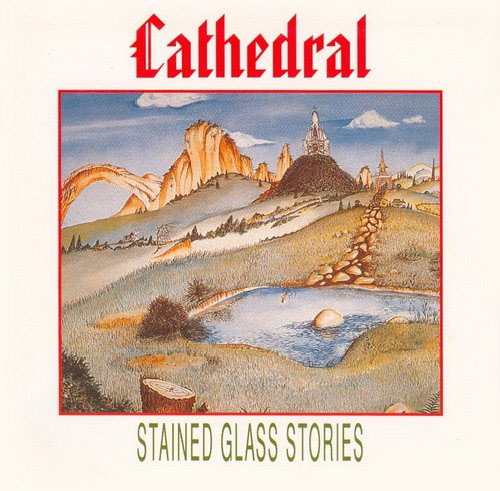
His final album, Lantern, completed musically in his lifetime is now available, released in time for this anniversary.
In Lantern, he plays Mellotrons and Chamberlins, gongs, percussion, Moog Modular, Moog Little Phatty, grand piano, Yamaha CS-70m, Wurlitzer, Ondes Martenot, Korg Kronos, Lap steel, Hammond, Vox & Bird Organs, and koto.
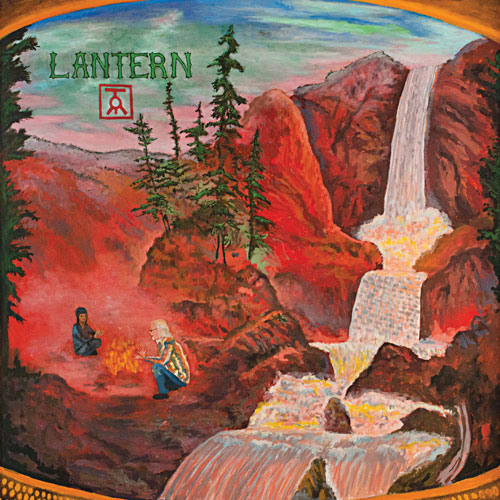
Stone
This is an essay about his lyrics for the song “Stone” (“The Stone in the Garden”) from the album Lantern.
“Stone”
How do you write a song about a stone?
They don’t move or speak.
Do you write about what happens around them?
How do you write a song about a stone?
The stone sat in the middle of my grandma’s garden,
Under a magnolia tree —
A big stone rising out from the ground,
The gray of quiet.
To me, it was a mountain
Surrounded by flowers —
Solemn, a Spirit untouchable.
Where did it come from?
How far underground did it go?
But it had no answers for me.
How do you write a song about a stone?
Nothing to say,
No history and no fame;
No secrets and noble secrets.
Its surface absorbing the night and day,
Silent in a neighborhood of silence.
Many years have passed after that house was sold.
I returned, but the gardens were gone —
Paved over, for cars to park.
And the stone had disappeared.
Although “Stone” was composed near the end of Tom’s life, the seeds that inspired it were sown in his heart long ago, during his early childhood. It is an ode to his paternal grandmother, who loved him so dearly and believed in him completely. As he wrote in his notes to the singer, “[This song] really isn’t all about a stone; it is secretly about my Grandma. I didn’t even know that until I was deep into writing it!” Tom revered that remarkable woman, whose presence nurtured his formative years. Symbolically, she is represented as “the stone in the garden,” but to the young Tom, “[that stone] was a mountain,” strong and enduring. Its existence made him ponder deep questions: “Where did it come from? How far underground [does] it go?” However, the stone remained silent; it “had no answers for [him].”
As he concluded in a line that he chose to delete in the final draft, “Its only secret was that it just was.” Answers didn’t matter so much. Even shrouded in mystery, he could still rely on the stone’s solidity and perseverance – or so he believed. But his beloved grandmother died in due course; her physical presence left the world. When Tom went back to look for the stone many years later (to re-affirm its existence), he discovered that “the gardens were gone; paved over, for cars to park.” And “the stone had disappeared,” leaving no trace — nothing to touch or cling to, except memory.
This song is the cornerstone and abiding metaphor of Tom’s emotional life: the stone that ‘was’ and eventually ‘was no more’ (a painful and shocking realization, since one does not expect that which is ‘solid’ to disappear without a trace). In a sense, the childhood emotions underlying the lyrics in “Stone” could be considered Tom’s first love song, experientially. He spent the rest of his life searching for the kind of solidity of the stone that ‘was’ (and which he had thought he could rely on forever, like the fixed images on his childhood lantern, expressed in the song by that title on his final album.
In “Lantern,” the speaker yearns for a world in which two lovers could dwell “in the spinning light forever; the fire would never go out; the stream would just keep flowing.” He laments that he “tried to hold onto it, but it all just flickered away”). This recurring theme – Tom’s search for solidity, his need for enduring love – consistently appears throughout his body of work. Toward the end of his life, facing terminal illness, he might have identified with “the stone that [would soon] disappear.” And yet, in the song “Lantern,” there is a hopeful tone in the final stanza. As Tom stares into the painted world of the lantern “every night before [he sleeps],” he is able to bring that spinning Light within himself, in the Lotus of his Heart. He becomes his own Eternal Shining One.
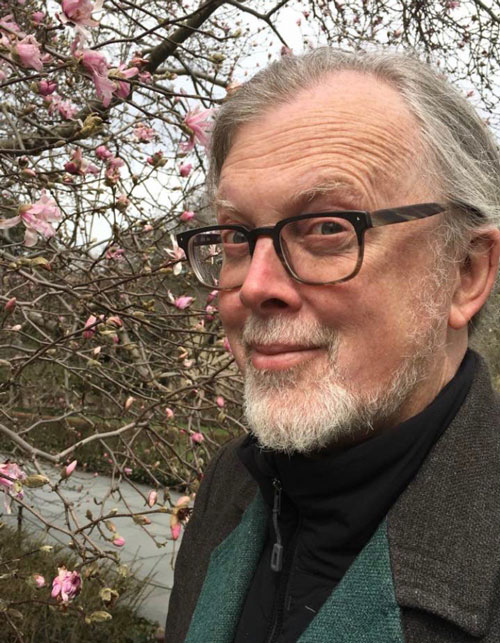
The Curtain
Here is another essay on “The Curtain,” a song from the album The Moon Will Rise. It includes songs from many of Tom’s albums, including Stained Glass Stories.
Tom’s lyrics were profoundly important to him. As he said himself in a post dated October 2018:
“I write lyrics. I’ve been writing them longer than I’ve played music – probably since the 4th grade. The lyrical process is very important to me and deeply entwined with the music. I have kept journals since the ‘70s and when something comes into my head, I start to write. I usually begin with an essay form and just put down everything related to my thought. As I am doing this, some words form images, metaphors, and rhythm, and when I go back to edit, I focus on them. I usually end up with a quite a lot of words. When I begin to work at setting them into a piece of music, another kind of chemistry begins. The music is a catalyst and helps me further edit the words and add new directions to the original ideas. The lyrics branch out into the music like a root system in soil.
Sometimes a song begins as a reaction to one of my ‘essays’; other times the music suggests something to me and causes me to start writing. I know that quite a few people have stated that they are not interested in the words to music that they love. I understand, but for me they are essential. I write all the vocals and words for my music and wrote the core lyrics for several Cathedral songs. . . . Some lyrics may not be clearly ‘didactic’; they may be abstract. But if they cause something to happen in your brain, then they have value. Others may capture very personal thoughts or feelings and preserve them like a time capsule.”
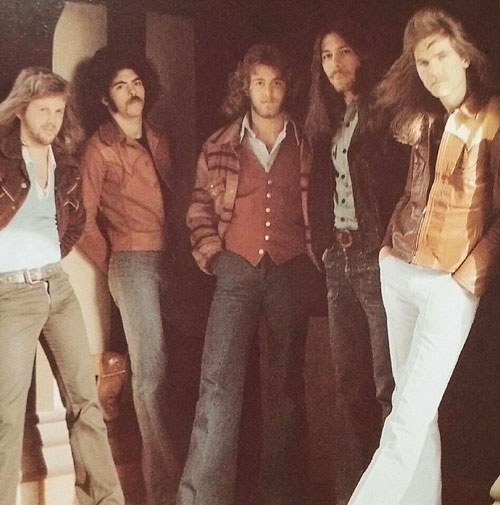
“Diorama” (2015) is one such example of a ‘time capsule.’ While “[f]lickering between life and death,” Tom strove to “freeze [a] moment for all of [us] to see.” He observed with clairvoyance that “[s]ome rare lives are poetry/ A cadence and a melody.” Modesty may have prevented him from seeing his own place among those rare, extraordinarily special souls, though he surely was one. We understand that rarity more fully in the wake of his physical absence — in the space he’s left behind, which cannot be filled. Yet his spiritual presence remains strong and vibrant, even as we here on Earth have completed another circle around the Sun.
Song: “Curtain” (originally titled “Curtain Rustles”; alternately titled “The Curtain”) from the album The Moon Will Rise (2015)
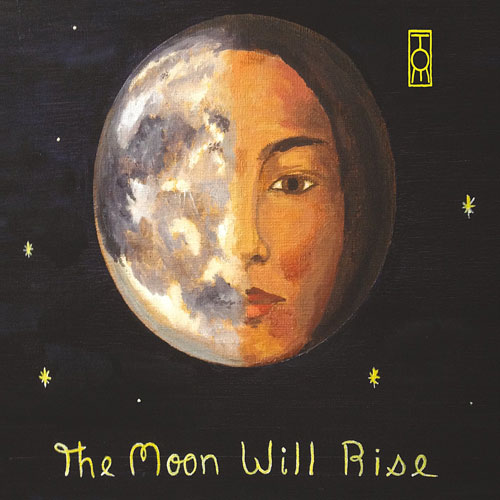
“Curtain”
Where does it begin – the state of mind
Where the visions come in?
Lie on your bed, fall into stillness
The walls grow thin
From down the block you hear the children play
The birds are singing with the wheels on the highway
Transparent and dissolving
Transparent and dissolving
How often do you slide behind the curtain
Into the world of the unnoticed?
I lay there and watch the curtain rustle
What comes after this
When all is broken down?
The banners with all the words
Flutter off and away
A golden ball floating
In a luminous pattern
Facing everything
Facing everything
Commentary on “Curtain,” with connections to other songs:
“Curtain” (originally titled “Curtain Rustles”) was composed in 2015, the year Tom was diagnosed with a terminal illness. It opens with a line that invites the listener to contemplate a philosophical question: “Where does it begin — the state of mind where the visions come in?” We can infer that these ‘visions’ are spiritual in nature; glimpses of the Reality beyond the material plane, ever-present but veiled and elusive; images that come to us only in a heightened state of awareness.
As Tom faced his mortality, the need for insight may have seemed more urgent, but he was certainly no stranger to what lies behind the ‘Curtain’ concealing this world. Tom was a Visionary his whole life; his access into higher states of consciousness began in childhood. Not only was he able to bridge that subtle boundary in this particular lifetime as ‘Tom Doncourt’; he had already learned how to draw Life’s illusory aspect aside in previous incarnations, parting it like a curtain to reveal the true nature of things, including the construction we call ‘Self.’ He was capable of leaving and finding ‘traces’ between lifetimes. He expressed his understanding of these things in many lines of many songs, including “The Search,” one of his earliest compositions (1976), and several of his much later works, such as “Diorama” (2015), “Plasma” (2018), and “Barrier” (2018) — but we will come to those connections (and others) in due course.
In “Curtain Rustles,” we must think of the word ‘rustles’ in its verb sense (to move; to stir; to bring about by energetic action), not as a noun (the sound made by anything that rustles). Paradoxically, the ‘action’ alluded to in the song is the difficult practice of non-doing. The speaker gives us a seemingly simple instruction: “Lie on your bed, fall into stillness.” The word ‘stillness’ suggests physical inactivity, but a focused spiritual effort is required. It means letting one’s ordinary awareness dissolve from the edges so that the Truth Body may enter; it means not holding rigidly, letting the clear light of voidness pervade. From that quiet state, one’s perceptions begin to expand, transforming the apparent solidity of ‘walls’ and other confines; they “grow thin,” ultimately becoming “transparent.” It is then that we may glimpse “the world of the unnoticed.” In Tom’s case, the Mind’s Ear divines a symphony in the surrounding sounds: “From down the block you hear the children play/ The birds are singing with the wheels on the highway.” Those resonances flow together as music, lulling him into a deeper state: “I lay there and watch the curtain rustle” (interestingly, he uses the verb ‘watch’ rather than ‘listen’ in this line, reinforcing the visual nature of his experience); it stirs, revealing a hint of “What comes after this/ When all is broken down” — when our sense of personal identity ‘dis-integrates’ like a drop of water merging with the infinite ocean, and the illusory layers of Maya fall away. Even language itself vanishes: “The banners with all the words/ Flutter off….” What remains, muses the speaker, is pure Spirit (Tom’s innermost Self): “A golden ball floating/ In a luminous pattern/ Facing everything.” Tom repeats the line, emphasizing its importance. The radiant sphere merges with Absolute Reality, comprising ‘everything, everywhere, always.’
At the same time, Tom is aware that the realizations arising from these ‘crossings’ cannot be sustained or fully grasped while we are still in ‘this’ world. He expresses that understanding in a song called “Plasma” (2018). In the fourth stanza of “Plasma,” the speaker tells us, “I can see the future, / But I can’t touch it. / Between Reality and the projected [illusory world], / There is no point of reference to me.” He also explores this idea in the second stanza of “Barrier,” another song composed in 2018. Though Tom has cloaked these lines in the metaphor of a playwright’s ‘fool’ addressing his audience, it seems he is also conveying his own experience on the periphery between life and death:
I stand at the edge of the world
And I draw a line.
I only hear the rustling
From the other side.
As a lover leaves a bouquet
On a doorstep,
I make my offering.
The world on this side of the line
Will never be without corruption.
And I cross the Barrier
To a place
Where everything is golden.
Here again, Tom presents the word ‘rustling’ in the specific context of a veil dividing this world and “the other side” — although in this case, the speaker ‘hears’ rather than ‘sees’ the curtain rustling.
There is also an echo in the word ‘golden,’ which appears in the last line of this stanza (“And I cross the Barrier/ To a place/ Where everything is golden”). It speaks to the ‘golden ball’ image in the closing verse of “Curtain.” Things ‘golden’ or ‘gold’ always connote positivity in the language of Tom’s lyrics.
We find other examples in “Especially for You” (2017), a gift-song written for his wife, Maxine. With joy, he watches her “Asleep and breathing,” observing “How warm, how gold” she is; he knows what a blessing it is that she has chosen to “share [her] life” with him. While ‘gold’ serves as an adjective describing skin tone, Tom’s word choice is also symbolic; it conveys something precious and lasting (much like the stone representing his grandmother in the song by that title). It expresses a mature, quiet kind of love “made from experience . . . simple and pure,” like the “perfect helix” formed by two moths circling each other in flight. ‘Gold’ imparts its positive qualities in “Princess Reindeer” (2015), as well — a song inspired by Tom’s daughter.
In his notes to the singer, he said, “The lyrics are from conversations I had with Wendy when she was very little.” She did a dance that “has stayed in [my] mind ever since.” It begins, “There is a special girl/ Making strange prints in the snow/ Wearing a crown of antlers/ Gilded in gold.” As the song proceeds, we learn that the golden-horned Princess Reindeer can transform things “by Magic, . . . chang[ing] the snow/ Into a warm place where dinosaurs go.”
Another recurring motif in Tom’s lyrics is the idea of leaving ‘traces’ of oneself. Just as the speaker in “Diorama” flickers “between life and death/ To freeze this moment for all of [us] to see,” so too does the reciter in “Barrier” bestow a parting gift: “As a lover leaves a bouquet/ On a doorstep/ I make my offering” to the world — it is this very music, forever carrying Tom’s essence.
But the idea of leaving traces goes all the way back to Tom’s earliest songs. In the “The Search” (1976), he tells the story of a relationship that has spanned many lifetimes. He and a twin soul have found each other again and again, witnessing one another’s death at the end of each incarnation. But these “[a]ncient children ‘hide’ from death,” averting the sense of permanent separation by leaving traces of themselves. “One still strong, the other fades/ He carries her into the glade/ So that the final light/ Would burn out bright.” The speaker describes his experience as she passes away: “On the water, in the glass/ The end is near but the image lasts/ Reflection turns to hidden past.” His memories will dissolve, but the hidden past is not inaccessible. He goes on to say, as if speaking from the omniscient perspective of his next lifetime, “Though Time erased the memory/ The waters ‘froze’ for him to see,” preserving a trace that he will seek again. In the next stanza, he alludes to future incarnations: “Ages pass in worlds apart/ Lives begin and end in pain/ Though his names and faces differ/ The secret need remains the same.” Toward the end of the song, as the speaker is about to ‘shed the mortal coil’ of his present existence, he knows his passing will not be without comfort. Though he is “Out of life, out of breath/ . . . Almost blind and near defeat/ From nearby a voice repeats:/ The search is over when again we meet.” The ‘memory’ of his twin soul will bear witness as his own ‘final light burns out bright.’ With reverence, they behold the sacred moment: “A darker dark than starless sky/ The edge of losing all he knows/ Congeals, revealing just her eyes/ From the water her shadow shows.” That scene is a sort of diorama in itself — the image of a world Tom has frozen in time “for all of to see.”
These are but a few of the threads that form the fabric of Tom’s music; the connections are endless. There is so much more to say about the songs in his final album, including the deeply moving title song, “Lantern.”
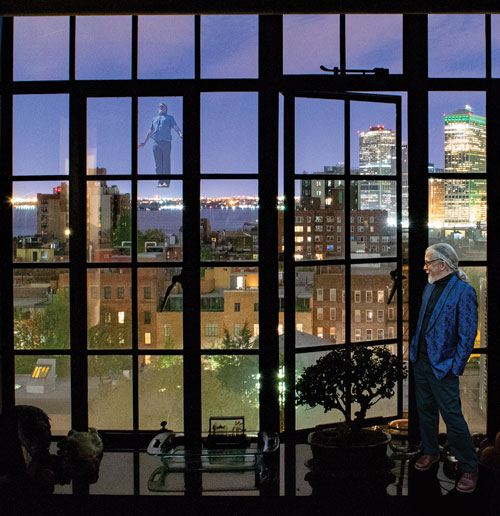
Though these paragraphs have largely focused on Tom’s inner psychological world (a domain he bravely explored, always seeking new frontiers), he was also a very social being with a warm personality and wry sense of humor. He loved engaging with his friends, family, co-workers, and audiences. He also cherished the physical world — parks, woods, mountains, streams, temples — and liked to surround himself with art objects and instruments. There is no doubt he would have wished for more time (and welcomed more projects), if that were possible. He left us what gifts he could in the time he had. We are blessed to have such an abundance.
In the closing lines of “Barrier,” Tom addresses us through the song’s speaker: “Audience, I turn to you/ The Silver Mirror/ In which you see:/ Your Dearest Friend/ Your Magic Power/ Your Lover/ Your Ideals/ The Key to the Secret Code.”
Discography:
Stained Glass Stories, with Cathedral (Delta Records, 1978)
Fauve (self released, 2002)
The Bridge, with Cathedral (self released/Musea, 2007)
Blacklight, with FauveMuseum (self released, 2009)
The Mortal Coil (self released, 2014)]
The Moon Will Rise (self released, 2015)
House in the Woods (self released, 2017)
Ratsimandresy & Doncourt, Volume 1, with Nadia Ratsimandresy (self released, 2018)
Blacklight [Remastered] (self released, 2018)
Lantern (posthumously, 2020)
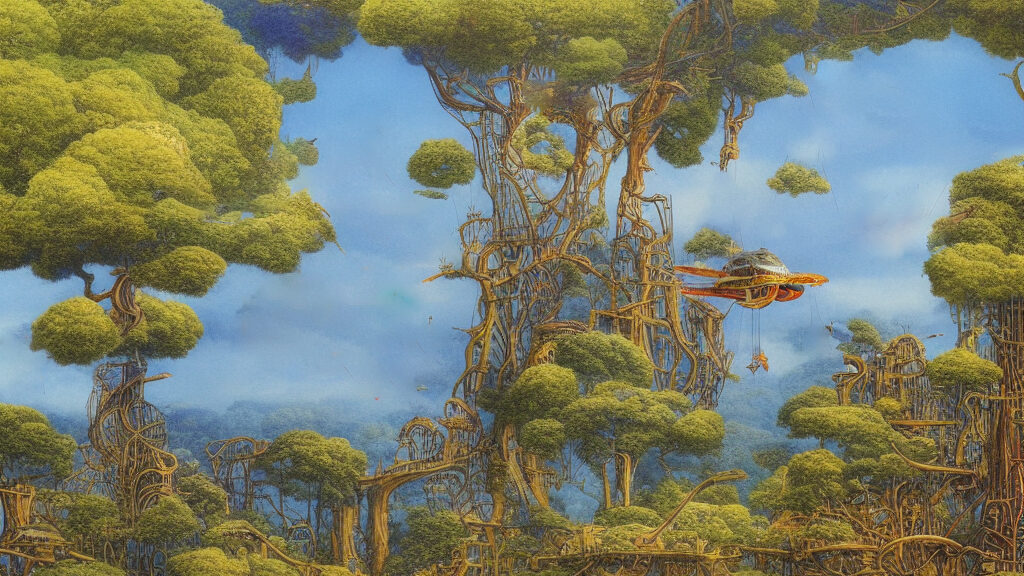
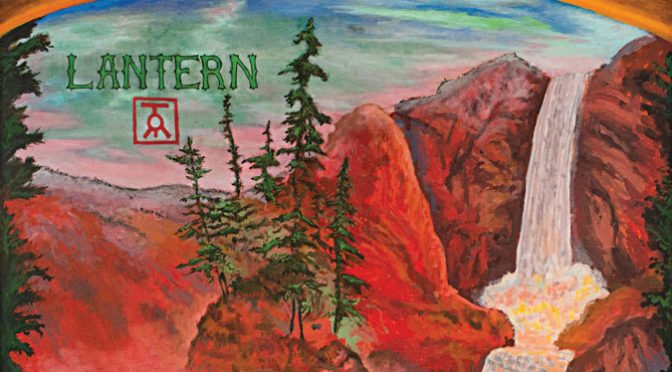
Wish he was still with us!!
What a remarkable life!